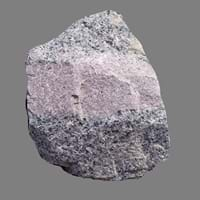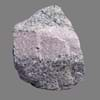Definition
Aplite is a fine-grained granite composed mainly of feldspar and quartz
Shonkinite is a rare, dark-coloured and intrusive igneous rock which contains augite and orthoclase feldspar as its primary constituents
Discoverer
Unknown
Unknown
Etymology
From German Aplit, from Greek haploos simple + -ite
From the name of Shonkin Sag ranges in the Highwood Mountains of north-central Montana, US
Class
Igneous Rocks
Igneous Rocks
Sub-Class
Durable Rock, Hard Rock
Durable Rock, Medium Hardness Rock
Group
Plutonic
Not Applicable
Other Categories
Fine Grained Rock, Opaque Rock
Coarse Grained Rock, Fine Grained Rock, Medium Grained Rock, Opaque Rock
Texture
Granular, Graphic
Earthy
Color
Black, Grey, Orange, Pink, White
Brown, Buff, Cream, Green, Grey, Pink, White
Durability
Durable
Durable
Scratch Resistant
Yes
Yes
Appearance
Veined or Pebbled
Banded and Foilated
Interior Uses
Bathrooms, Countertops, Decorative Aggregates, Entryways, Floor Tiles, Homes, Hotels, Kitchens, Stair Treads
Decorative Aggregates, Flooring, Homes, Interior Decoration
Exterior Uses
As Building Stone, As Facing Stone, Bridges, Paving Stone, Near Swimming Pools, Office Buildings, Resorts
As Building Stone, As Facing Stone, Garden Decoration, Paving Stone
Other Architectural Uses
Curbing
Curbing
Construction Industry
As Dimension Stone
As Dimension Stone, Cement Manufacture, Construction Aggregate, for Road Aggregate, Landscaping, Making natural cement, Manufacture of Magnesium and Dolomite Refractories
Medical Industry
Not Yet Used
Not Yet Used
Antiquity Uses
Artifacts, Monuments, Sculpture, Small Figurines
Artifacts, Monuments, Sculpture
Commercial Uses
Curling, Gemstone, Laboratory bench tops, Small Sculptures, Tombstones
Cemetery Markers, Creating Artwork
Types
Not Available
Not Available
Features
Available in lots of colors, Available in Lots of Colors and Patterns, Is one of the oldest rock
Available in Lots of Colors and Patterns, Is one of the oldest rock, Matrix variable
Archaeological Significance
Famous Monuments
Data Not Available
Data Not Available
Famous Sculptures
Data Not Available
Data Not Available
Pictographs
Not Used
Used
Petroglyphs
Not Used
Used
Formation
Aplites belong to intrusive igneous rocks which are mostly quart and alkali feldspar and are formed from residual eutectic granitic liquids and represent the final crystallization products of magma.
Shonkinites are formed due to alkaline igneous activities and are generally formed in thick continental crustal areas or in Cordilleran subduction zones.
Mineral Content
Amphibole, Biotite, Feldspar, Hornblade, Micas, Muscovite or Illite, Plagioclase, Pyroxene, Quartz
Amphibole, Biotite, Feldspar, Hornblade, Micas, Muscovite or Illite, Plagioclase, Pyroxene, Quartz
Compound Content
Aluminium Oxide, CaO, Iron(III) Oxide, FeO, Potassium Oxide, MgO, MnO, Sodium Oxide, Phosphorus Pentoxide, Silicon Dioxide, Titanium Dioxide
Aluminium Oxide, CaO, Iron(III) Oxide, FeO, Potassium Oxide, MgO, MnO, Sodium Oxide, Phosphorus Pentoxide, Silicon Dioxide, Titanium Dioxide
Types of Metamorphism
Burial Metamorphism, Cataclastic Metamorphism, Hydrothermal Metamorphism, Regional Metamorphism
Burial Metamorphism, Cataclastic Metamorphism, Contact Metamorphism, Hydrothermal Metamorphism, Impact Metamorphism, Regional Metamorphism
Types of Weathering
Chemical Weathering, Mechanical Weathering
Biological Weathering, Chemical Weathering, Mechanical Weathering
Types of Erosion
Chemical Erosion, Coastal Erosion, Wind Erosion
Chemical Erosion, Coastal Erosion, Sea Erosion, Water Erosion
Grain Size
Very fine-grained
Medium to Fine Coarse Grained
Fracture
Not Available
Not Available
Porosity
Less Porous
Less Porous
Luster
Dull to Pearly to Subvitreous
Subvitreous to Dull
Cleavage
Not Available
Perfect
Toughness
Not Available
Not Available
Specific Gravity
2.6
2.6-2.7
Transparency
Opaque
Opaque
Density
2.6 g/cm3
2.6-2.8 g/cm3
Resistance
Heat Resistant, Wear Resistant
Heat Resistant, Impact Resistant, Wear Resistant
Deposits in Eastern Continents
Asia
China, India, Iran, Saudi Arabia, Sri Lanka, Taiwan, Thailand, Turkey, Vietnam
China, India, Iran, Saudi Arabia, Sri Lanka, Taiwan, Thailand, Turkey, Vietnam
Africa
Angola, Egypt, Madagascar, Namibia, Nigeria, South Africa
Angola, Egypt, Madagascar, Namibia, Nigeria, South Africa
Europe
Austria, Belgium, Finland, France, Germany, Italy, Norway, Sardinia, Spain, Switzerland, The Czech Republic, Venezuela
Bulgaria, England, Germany, Norway, Romania, Switzerland
Others
Not Yet Found
Not Yet Found
Deposits in Western Continents
North America
Canada, USA
USA
South America
Not Yet Found
Brazil, Chile
Deposits in Oceania Continent
Australia
Not Yet Found
New Zealand, Queensland, South Australia, Western Australia
Aplite vs Shonkinite Characteristics
Though some rocks look identical, they have certain characteristics which distinguish them from others. Characteristics of rocks include texture, appearance, color, fracture, streak, hardness etc. Aplite vs Shonkinite characteristics assist us to distinguish and recognize rocks. Also you can check about Properties of Aplite and Properties of Shonkinite. Learn more about Aplite vs Shonkinite in the next section. The interior uses of Aplite include Bathrooms, Countertops, Decorative aggregates, Entryways, Floor tiles, Homes, Hotels, Kitchens and Stair treads whereas the interior uses of Shonkinite include Decorative aggregates, Flooring, Homes and Interior decoration. Due to some exceptional properties of Aplite and Shonkinite, they have various applications in construction industry. The uses of Aplite in construction industry include As dimension stone and that of Shonkinite include As dimension stone, Cement manufacture, Construction aggregate, For road aggregate, Landscaping, Making natural cement, Manufacture of magnesium and dolomite refractories.
More about Aplite and Shonkinite
Here you can know more about Aplite and Shonkinite. The life cycle of a rock consists of formation of rock, composition of rock and transformation of rock. The composition of Aplite and Shonkinite consists of mineral content and compound content. The mineral content of Aplite includes Amphibole, Biotite, Feldspar, Hornblade, Micas, Muscovite or Illite, Plagioclase, Pyroxene, Quartz and mineral content of Shonkinite includes Amphibole, Biotite, Feldspar, Hornblade, Micas, Muscovite or Illite, Plagioclase, Pyroxene, Quartz. You can also check out the list of all Igneous Rocks. When we have to compare Aplite vs Shonkinite, the texture, color and appearance plays an important role in determining the type of rock. Aplite is available in black, grey, orange, pink, white colors whereas, Shonkinite is available in brown, buff, cream, green, grey, pink, white colors. Appearance of Aplite is Veined or Pebbled and that of Shonkinite is Banded and Foilated. Properties of rock is another aspect for Aplite vs Shonkinite. The hardness of Aplite is 6.5 and that of Shonkinite is 5.5-6. The types of Aplite are Not Available whereas types of Shonkinite are Not Available. Streak of rock is the color of powder produced when it is dragged across an unweathered surface. The streak of Aplite and Shonkinite is white. The specific heat capacity of Aplite is 0.79 kJ/Kg K and that of Shonkinite is 0.92 kJ/Kg K. Depending on the properties like hardness, toughness, specific heat capacity, porosity etc., rocks are resistant to heat, wear, impact, etc.Aplite is heat resistant, wear resistant whereas Shonkinite is heat resistant, impact resistant, wear resistant.





